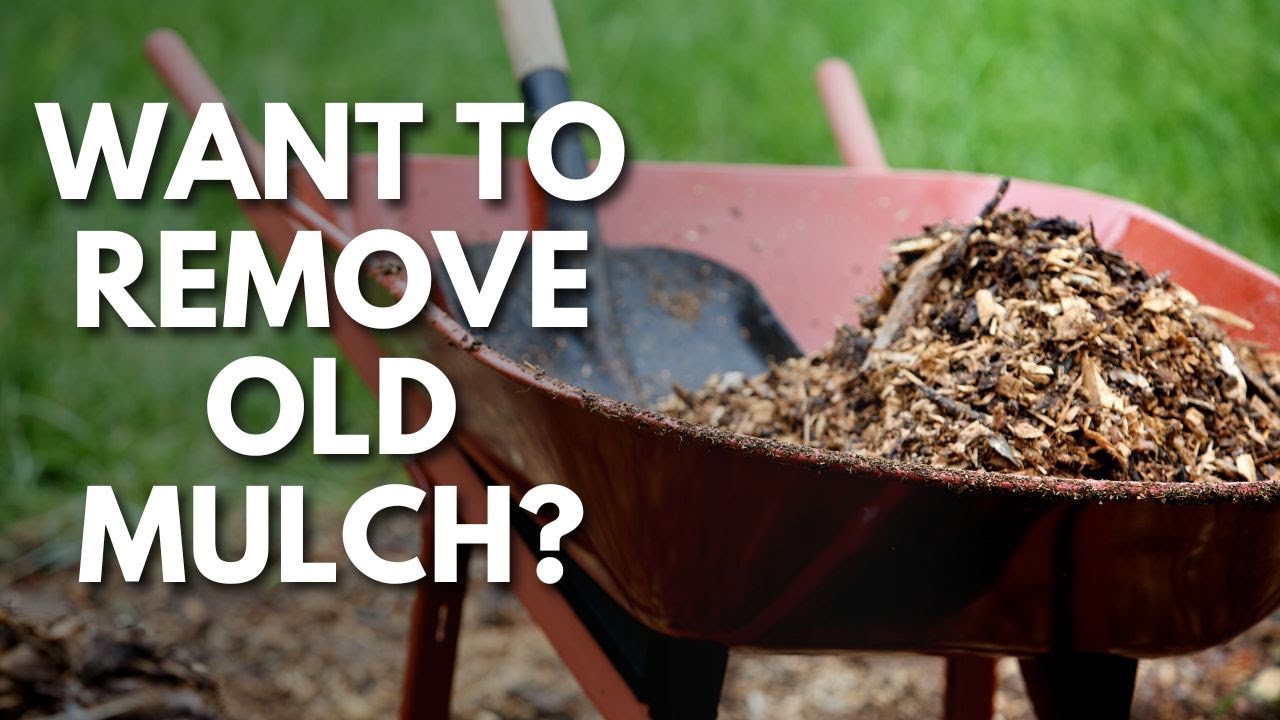Mulch can benefit your garden, but sometimes it needs removal. The process can seem daunting without proper guidance.
Removing mulch efficiently requires the right approach and tools. Whether you’re replacing old mulch or clearing space for new plants, knowing the best methods is essential. This blog will explore practical ways to remove mulch from your garden, ensuring your space stays healthy and neat.
From manual techniques to helpful tools, we’ll cover everything you need to make the task easier. Stay tuned to discover how you can keep your garden looking its best with minimal effort. Ready to dig in? Let’s get started!

Credit: www.reddit.com
Preparation
Removing mulch from a garden is best done with a rake to gather it into piles. Then, use a shovel to transfer it to a wheelbarrow for easy disposal. This method ensures an efficient and clean garden bed.
Gather Tools
Collect all needed tools first. You will need a rake, shovel, and wheelbarrow. Having the right tools makes the job easier and faster. Check each tool to ensure they are in good condition. Sharp tools work better and save time. Place them close to your work area. This helps you avoid walking back and forth.
Plan The Process
Start with a small area. Remove mulch in sections. This method keeps things organized. Create a plan before you begin. Decide where to place the removed mulch. You can use it in compost or another part of the garden. Planning ahead saves time and effort. It also helps you stay focused.

Credit: www.reddit.com
Removing Mulch By Hand
First, choose a sturdy rake. This tool helps gather mulch easily. Start at one end of the garden. Rake the mulch into small piles. Move slowly to avoid damaging plants. Continue raking until all mulch is in piles.
Once the mulch is in piles, use garden bags. Scoop the mulch into the bags by hand or with a shovel. Make sure not to overfill the bags. Tie the bags securely to prevent spills. Dispose of the bags properly or use the mulch elsewhere.
Using A Leaf Blower
A leaf blower quickly removes mulch from your garden. Direct the air stream at the mulch to move it efficiently. This method saves time and effort.
Choose The Right Blower
Pick a blower that is easy to handle. Look for one with adjustable speed settings. This helps control the airflow. A cordless blower offers more freedom to move. Electric blowers are quieter than gas ones. Make sure the blower is not too heavy. A lightweight blower reduces strain on your arms.
Blowing Techniques
First, clear large debris by hand. Use the blower on a low setting. Gently push the mulch into piles. Move in one direction. Keep the nozzle close to the ground. This prevents mulch from spreading too far. Use short bursts of air for better control. Work slowly to ensure all mulch is collected.

Credit: www.youtube.com
Utilizing A Mulch Vacuum
A mulch vacuum is easy to use. It saves a lot of time. You can clean large areas quickly. The vacuum collects mulch in a bag. This makes disposal simple. No need to bend or lift heavy bags.
The vacuum can also be used for other tasks. It can collect leaves, grass, and small twigs. Versatile tool for garden maintenance. Using a mulch vacuum keeps your garden tidy and clean. No more scattered mulch everywhere.
Start by reading the manual. This helps you understand the machine. Always wear safety gear. Gloves and goggles are important. Make sure the mulch is dry. Wet mulch can clog the vacuum. Move the vacuum slowly over the mulch.
Empty the bag frequently. This prevents the vacuum from getting too heavy. Store the vacuum in a dry place. Regular maintenance is key. Check for wear and tear. Replace parts when needed. Following these steps ensures long life for your vacuum.
Composting Old Mulch
Gather old mulch. Add it to the compost pile. Mix with food scraps and grass. Turn the pile often. This helps mulch break down faster.
Keep the compost moist. Not too wet, not too dry. In a few months, you will have rich compost.
Spread old mulch on garden soil. Mix it in well. This adds organic matter to the soil. Helps plants grow strong.
Keep adding mulch each year. Over time, mulch will turn into rich soil. Your garden will thrive.
Disposing Of Mulch
Check with your local waste management for disposal rules. Some places have special mulch disposal sites. You might need to bag the mulch first. Use biodegradable bags if possible. This helps the environment.
Use old mulch in a compost pile. It can help make rich soil. Spread it over flower beds or paths. It can stop weeds from growing. Donate mulch to a community garden. They can always use extra mulch. This is a great way to recycle and help others.
Preventing Future Mulch Build-up
Regular maintenance is key for your garden. Check your mulch every month. Remove any excess mulch. This helps your garden breathe. It also helps plants grow better. Use a rake to spread the mulch evenly. Avoid piling mulch against plant stems. This can cause rot and disease. Keep mulch about three inches deep. This depth protects plants without causing build-up.
Choose mulch that breaks down easily. Organic mulch is a good choice. It adds nutrients to the soil. Bark mulch is also good. It lasts long and looks nice. Avoid rubber mulch. It does not break down and can cause build-up. Check the mulch type before buying. Read the label carefully. Make sure it fits your garden needs.
Tips And Tricks
Easily remove mulch from your garden by using a rake or shovel. Clear the mulch in small sections to avoid damaging plants. This method ensures a clean garden bed ready for new growth.
Work Efficiently
Use a rake to gather the mulch. Pile it up in one spot. This keeps the garden tidy. A shovel helps scoop the mulch into a wheelbarrow. This makes it easy to move. Wear gloves to protect your hands. They can get sore without them. Break the task into small parts. This keeps you from getting too tired.
Safety Precautions
Wear a mask to avoid breathing dust. Some mulch can be dusty. Safety glasses protect your eyes. Mulch can fly up and hurt them. Check for bugs or animals hiding in the mulch. They can bite or sting. Take breaks often. Stay hydrated. Drink water to keep your energy up.
Frequently Asked Questions
How Do You Remove Old Mulch?
To remove old mulch, use a rake or shovel. Gently lift and gather the mulch. Dispose of it or compost it.
Should I Remove Mulch Before Adding New?
Yes, remove old mulch to prevent pests and diseases. This also ensures better soil aeration and plant health.
What Tools Do I Need To Remove Mulch?
You need a rake, shovel, and gloves. These tools make the process easier and more efficient.
Can I Compost Removed Mulch?
Yes, you can compost old mulch. Ensure it is free from pests and diseases before adding it to your compost pile.
Conclusion
Removing mulch from your garden can be simple. Use the right tools. Follow easy steps. Protect your plants. Keep your garden clean and healthy. Regular maintenance helps your garden thrive. Now, you can enjoy a beautiful and well-kept garden. Happy gardening!

My mission is to help you bring the beauty of nature indoors with expert advice, detailed plant care guides, and creative design ideas.





Leave a Reply